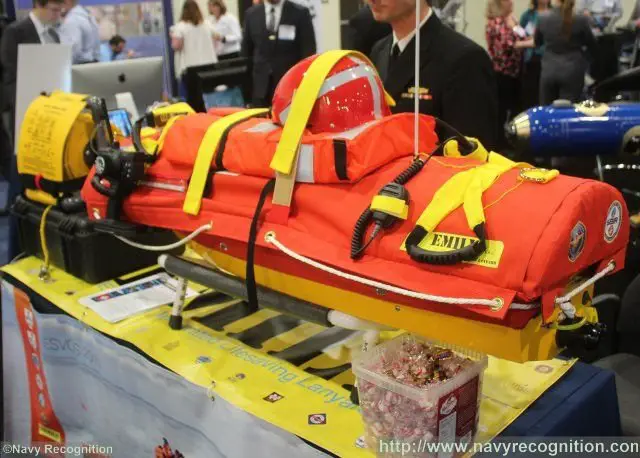Breaking news
ONR demonstrates EMILY capabilities at SAS 2016.
 Two EMILY robotic lifeguards are showcasing their capabilities on Potomac river during SAS 2016 |
|||
EMILY
is the successful culmination of a collaboration between inventor Tony
Mulligan, ONR and the Navy’s Small Business Innovation Research
(SBIR) and Small Business Technology Transfer (STTR) programs. SBIR provides
the Navy with innovative advances in technology created by small firms—while
STTR transitions products developed by both small businesses and research
institutions to the Navy and Marine Corps.
Outfitted in bright orange, red and yellow colors, each
cylindrical EMILY buoy is four feet long and weighs 25 pounds. It’s
powered by a jet engine system similar to a mini jet ski, shoots a water
jet stream for propulsion and travels up to 22 miles per hour. EMILY
also has two-way communication radios, a video camera with a live feed
to smart phones and lights for night rescues. EMILY’s roots stretch back to 2001, when Mulligan received ONR and SBIR-STTR funding to develop a computer- and sensor-operated UAV to monitor whale movements during Navy sonar testing. However, when the wars in Afghanistan and Iraq erupted, Mulligan improved and transformed his vehicles into Silver Fox UAVs in 2003, which helped U.S. troops conduct aerial surveillance and reconnaissance missions. |
|||
 A third EMILY system is also displayed on ONR's booth at Sea-Air-Space |
|||
In
2011, Mulligan received funding to disassemble existing Silver Foxes and
use their components, such as motor parts and navigation computers, to
build unmanned surface vehicles for hurricane tracking, tsunami response
and search-and-rescue missions. This technology was built upon to develop
EMILY.
Mulligan also has worked with ONR’s SwampWorks program—which specializes in innovative, high-risk technologies—to develop components that went into both EMILY and the Mobile Gateway Buoy, designed to support Navy mine counter-measure missions. Mulligan has provided more than 260 EMILY devices to navies, coast guards and search-and-rescue units in South Korea, Indonesia, Singapore, the United Kingdom, France, Mongolia, Brazil, Mexico and Greece. U.S. rescue teams in Oregon and Washington, D.C., also have expressed interest in the robotic lifeguard. |
|||



















